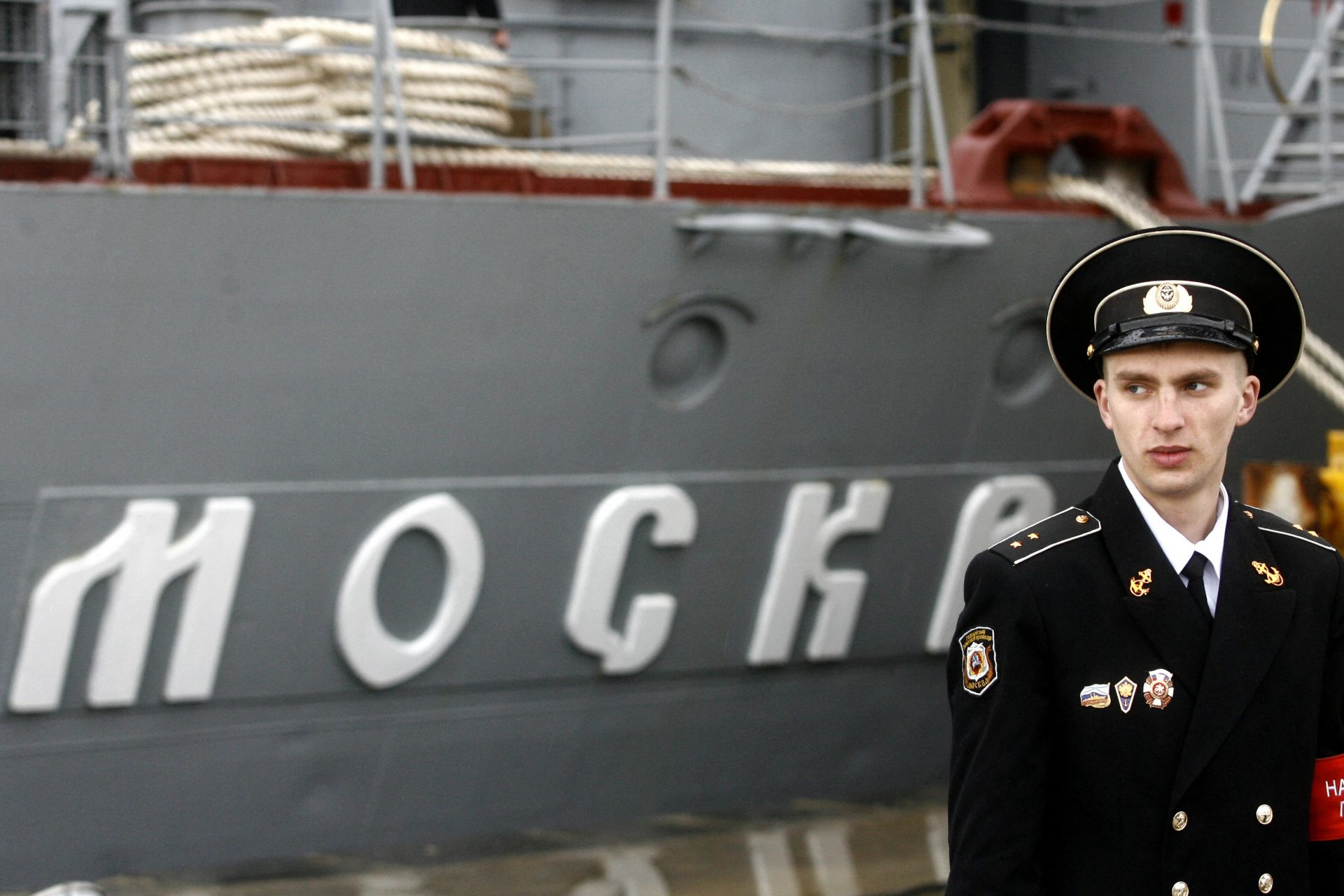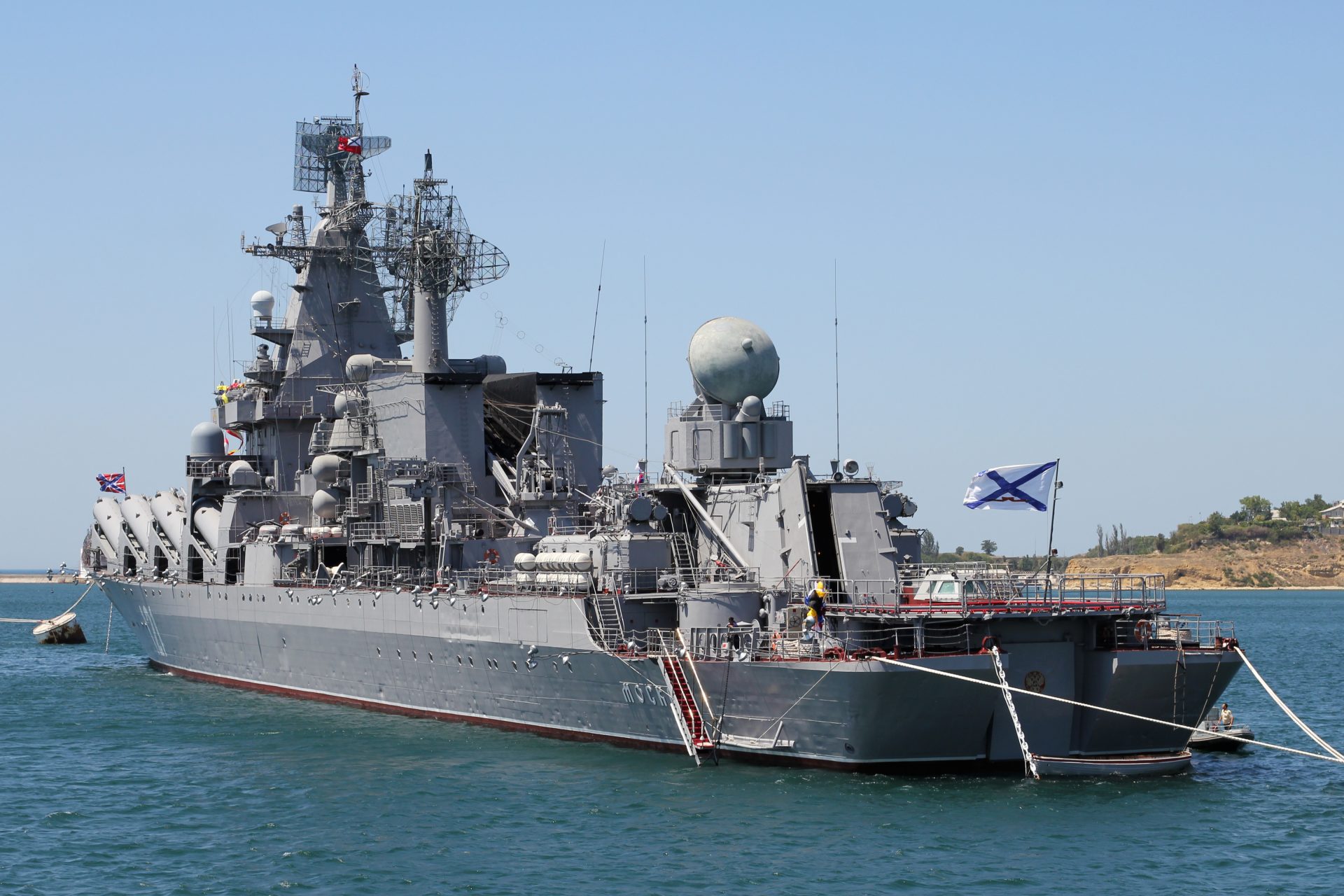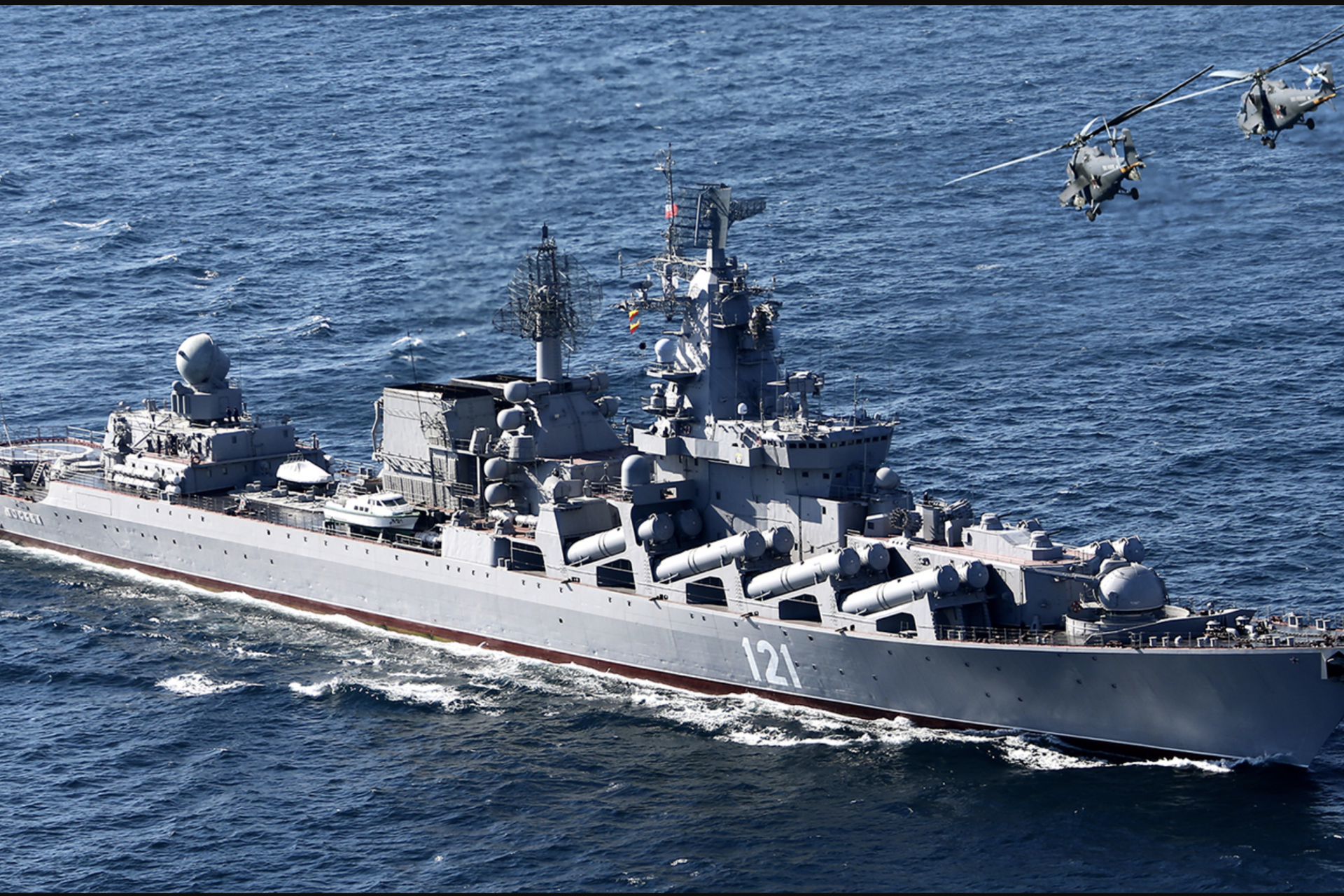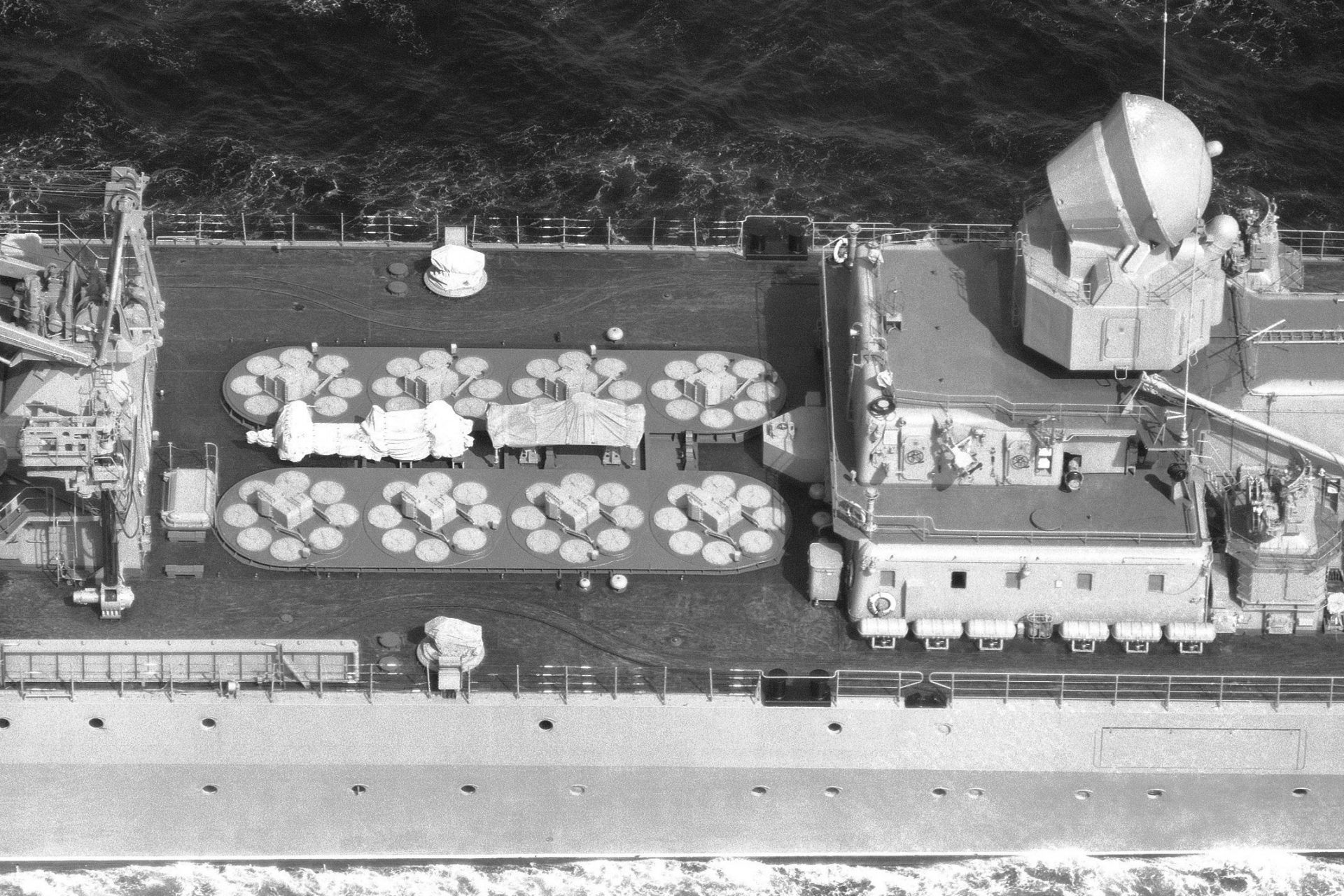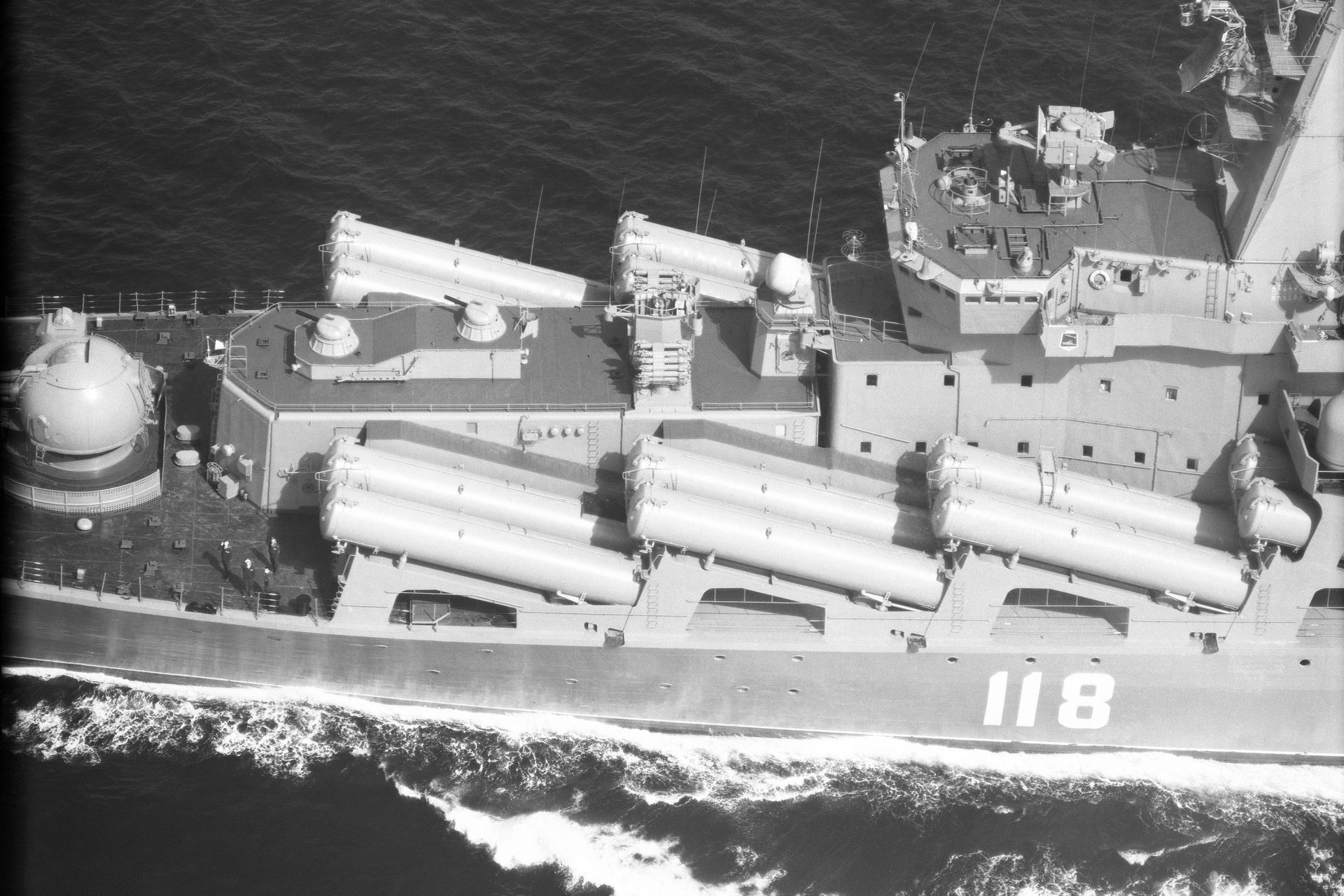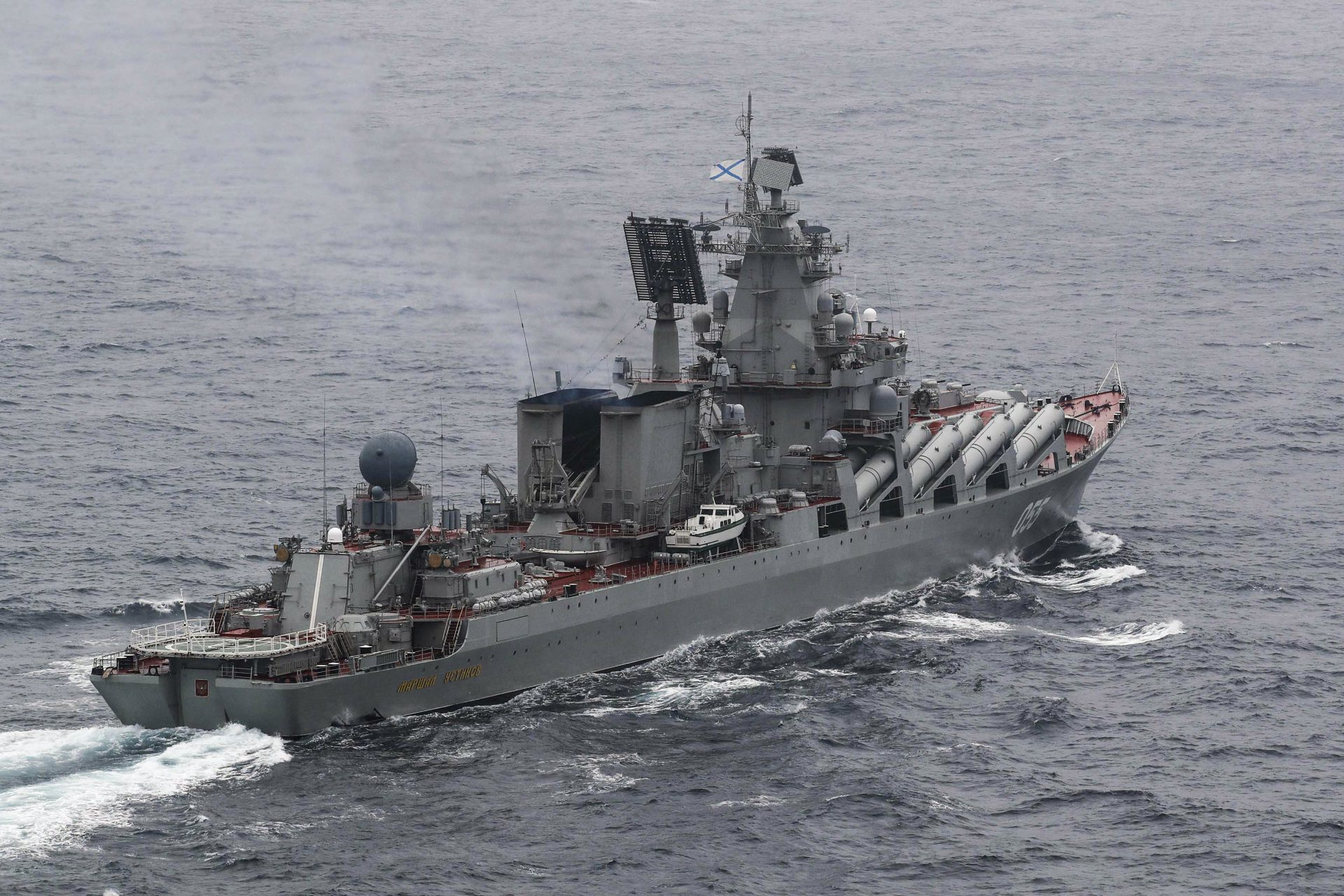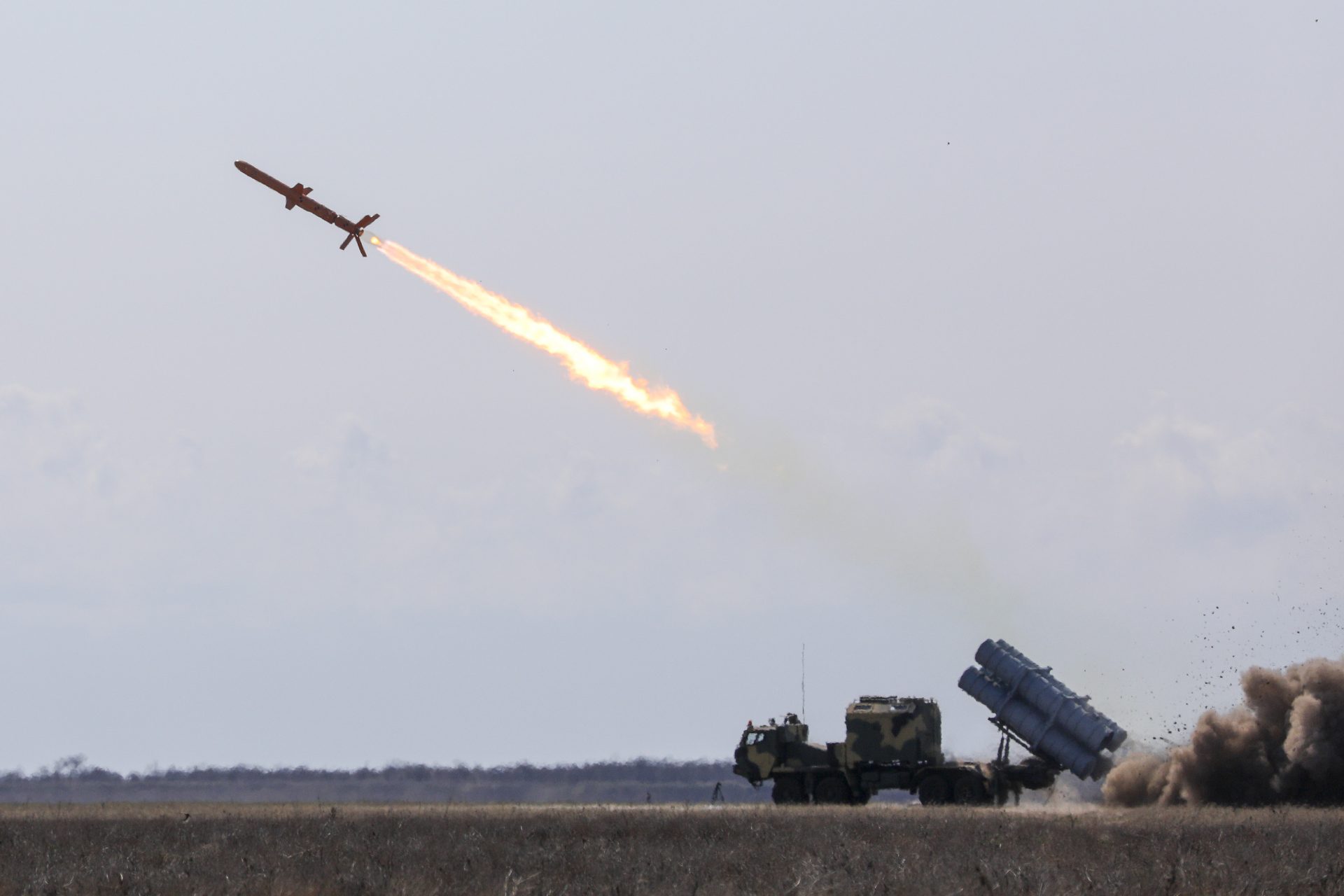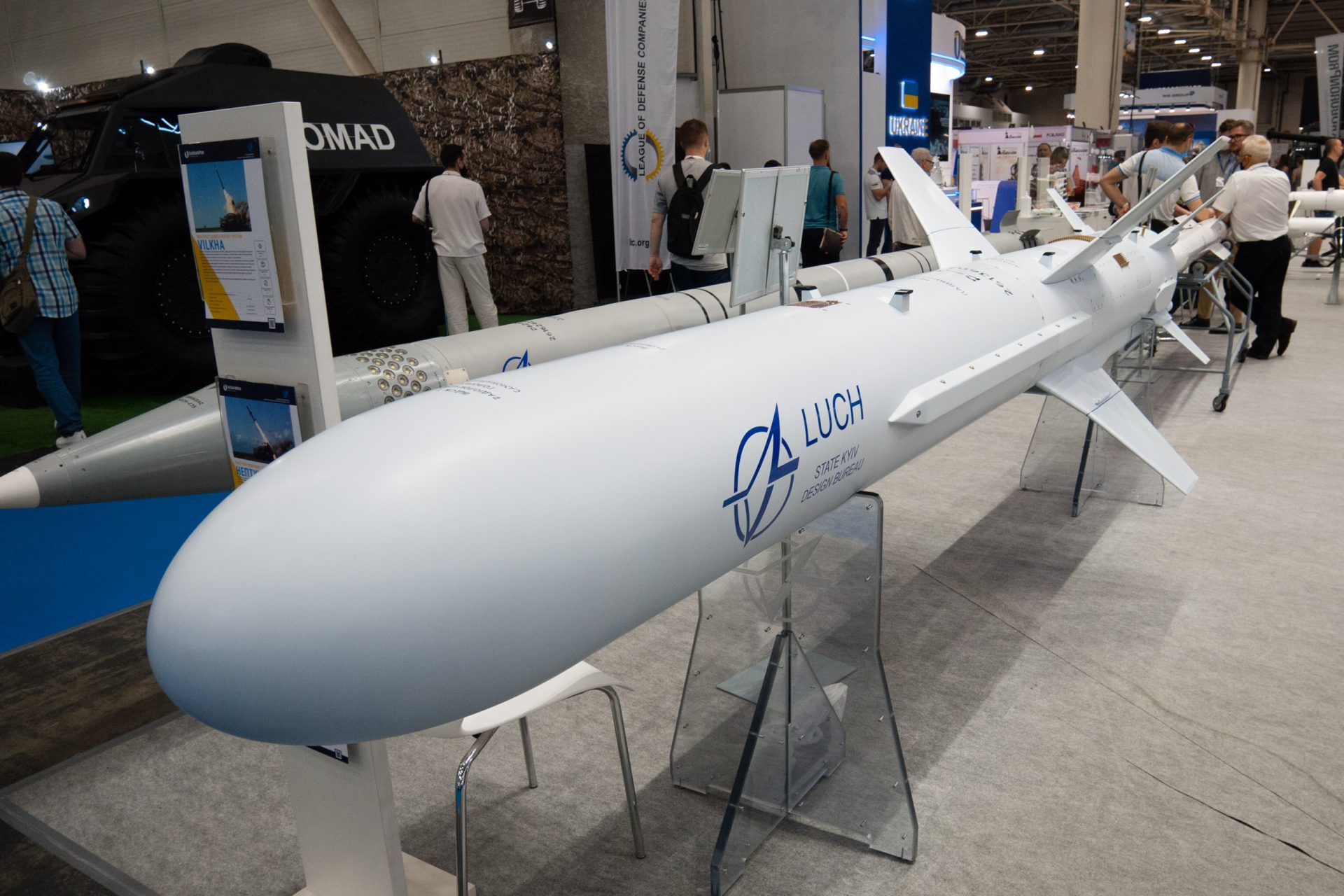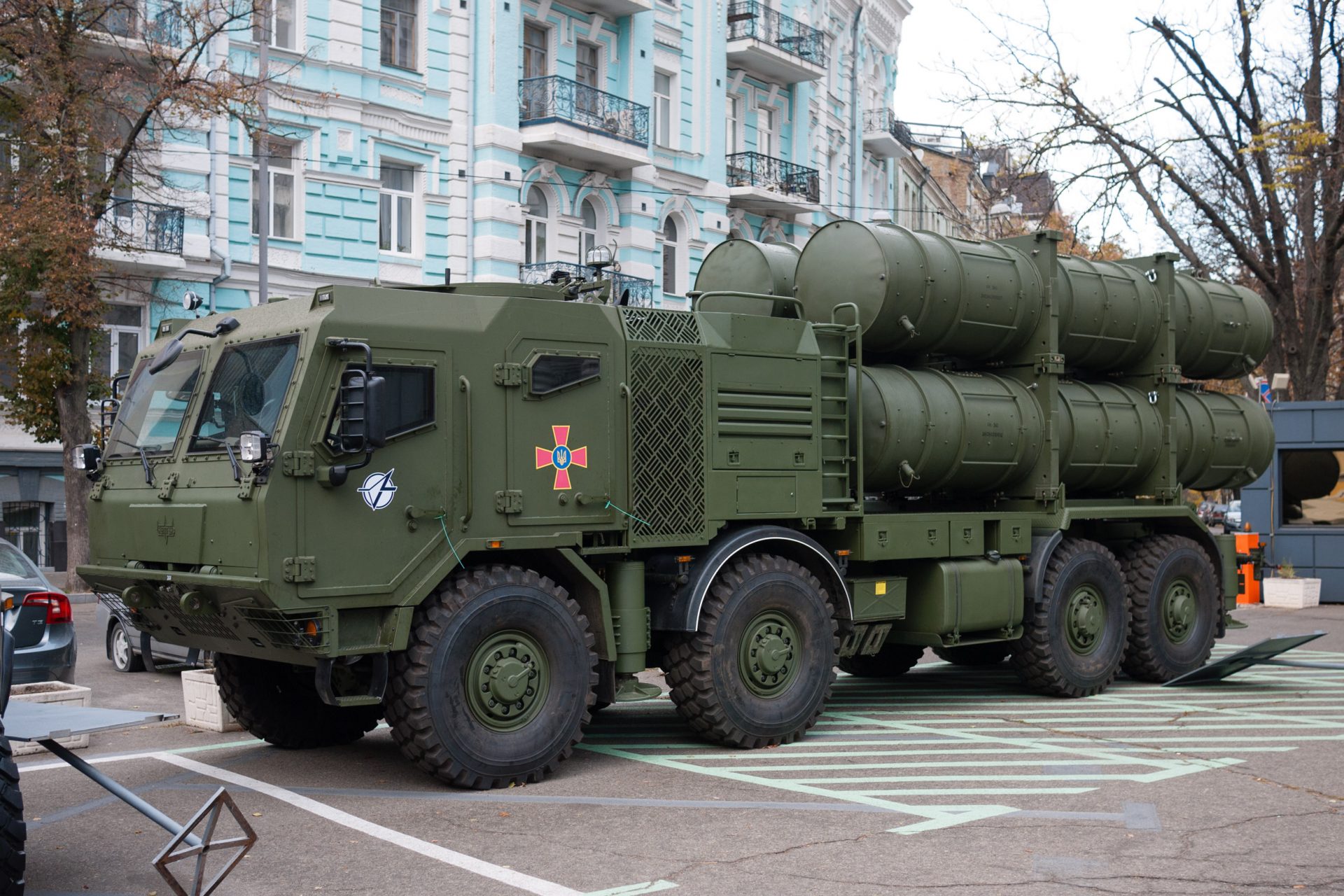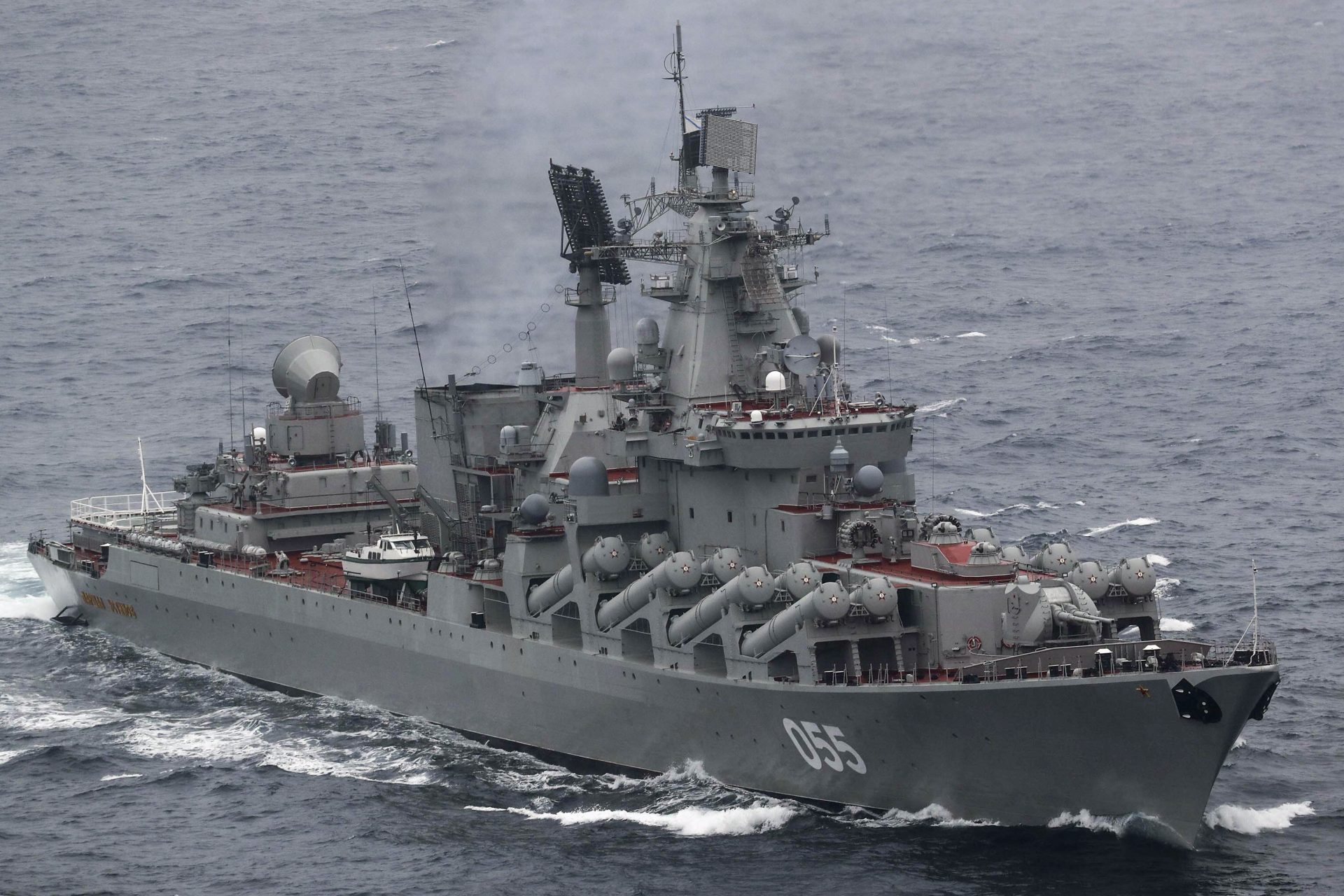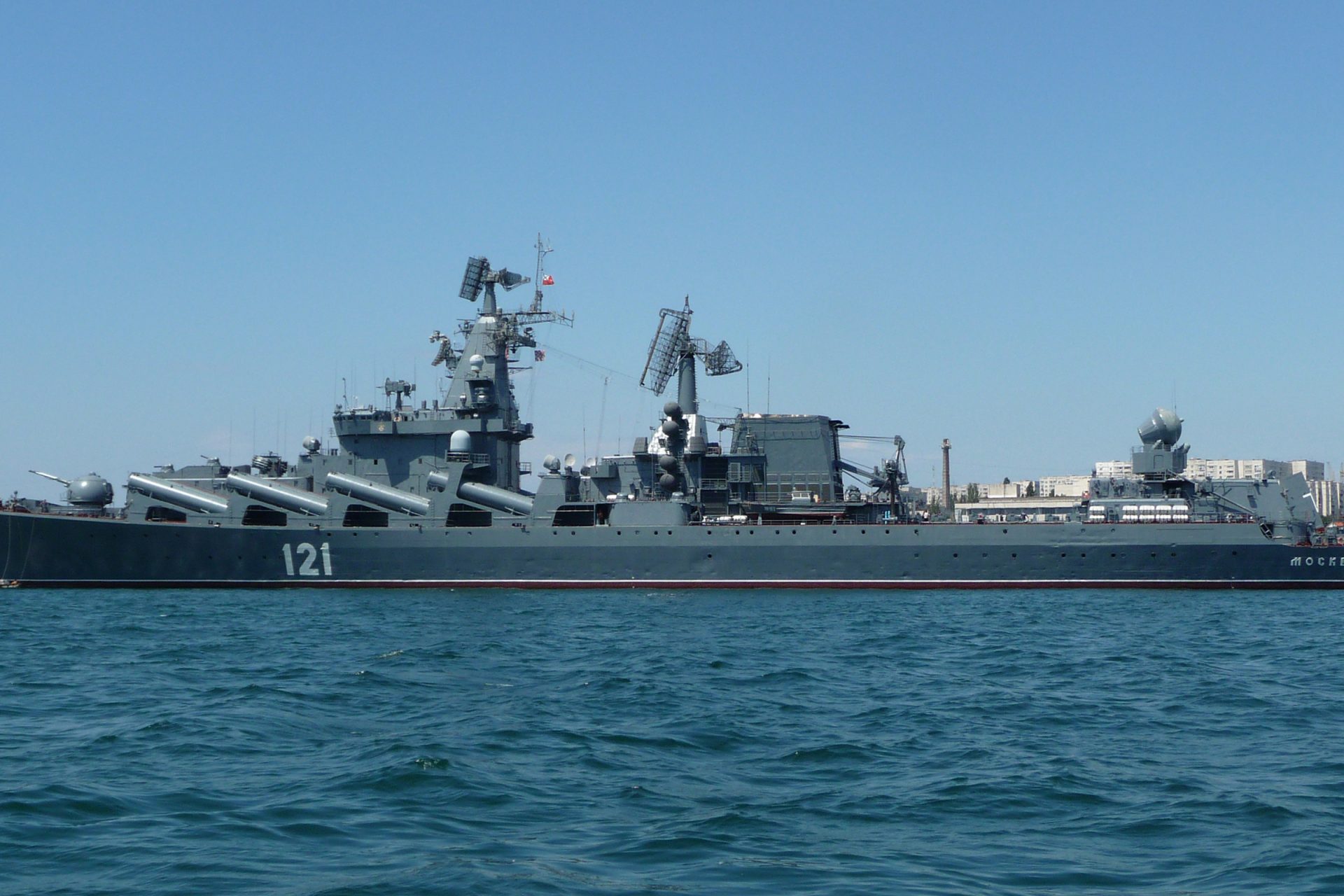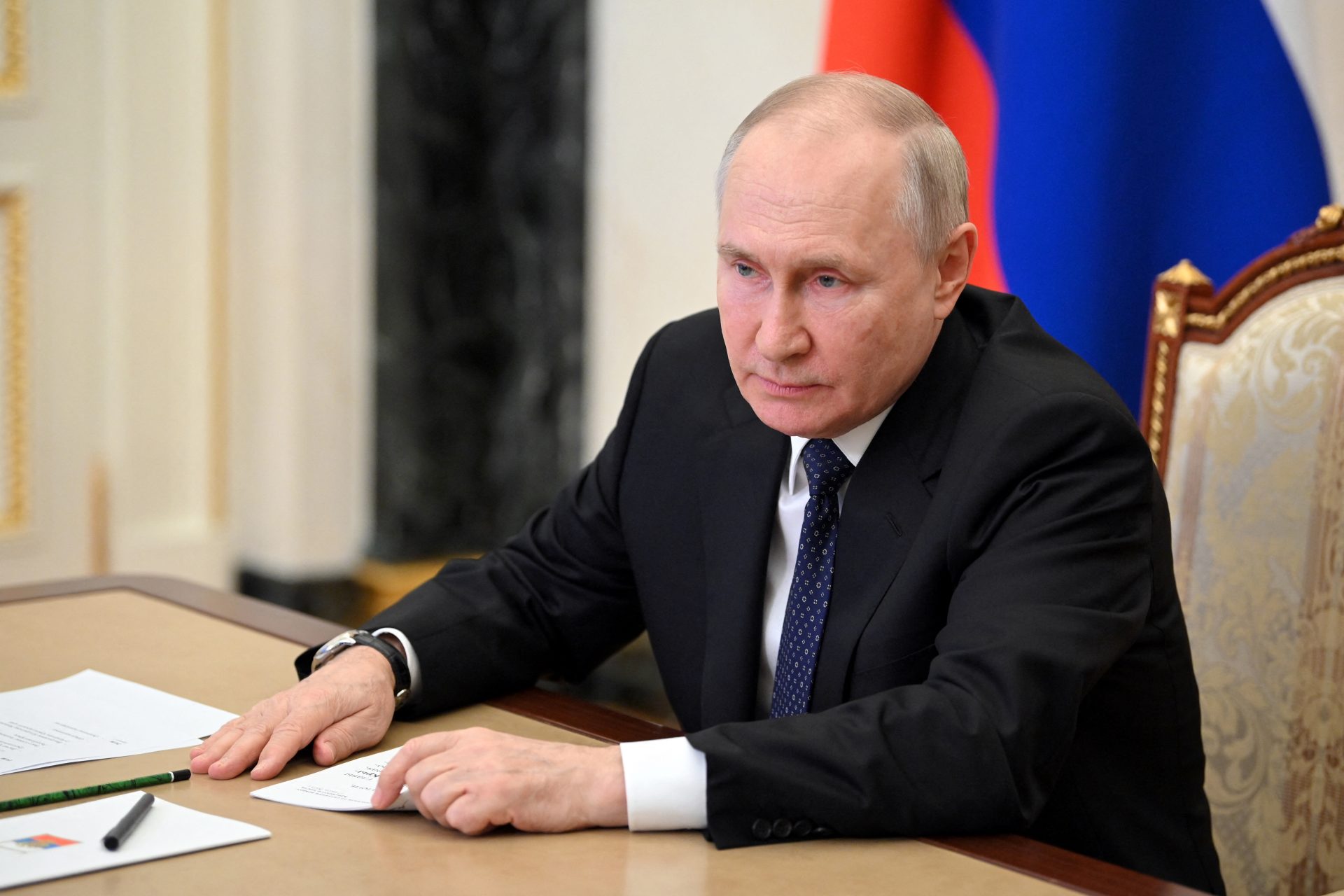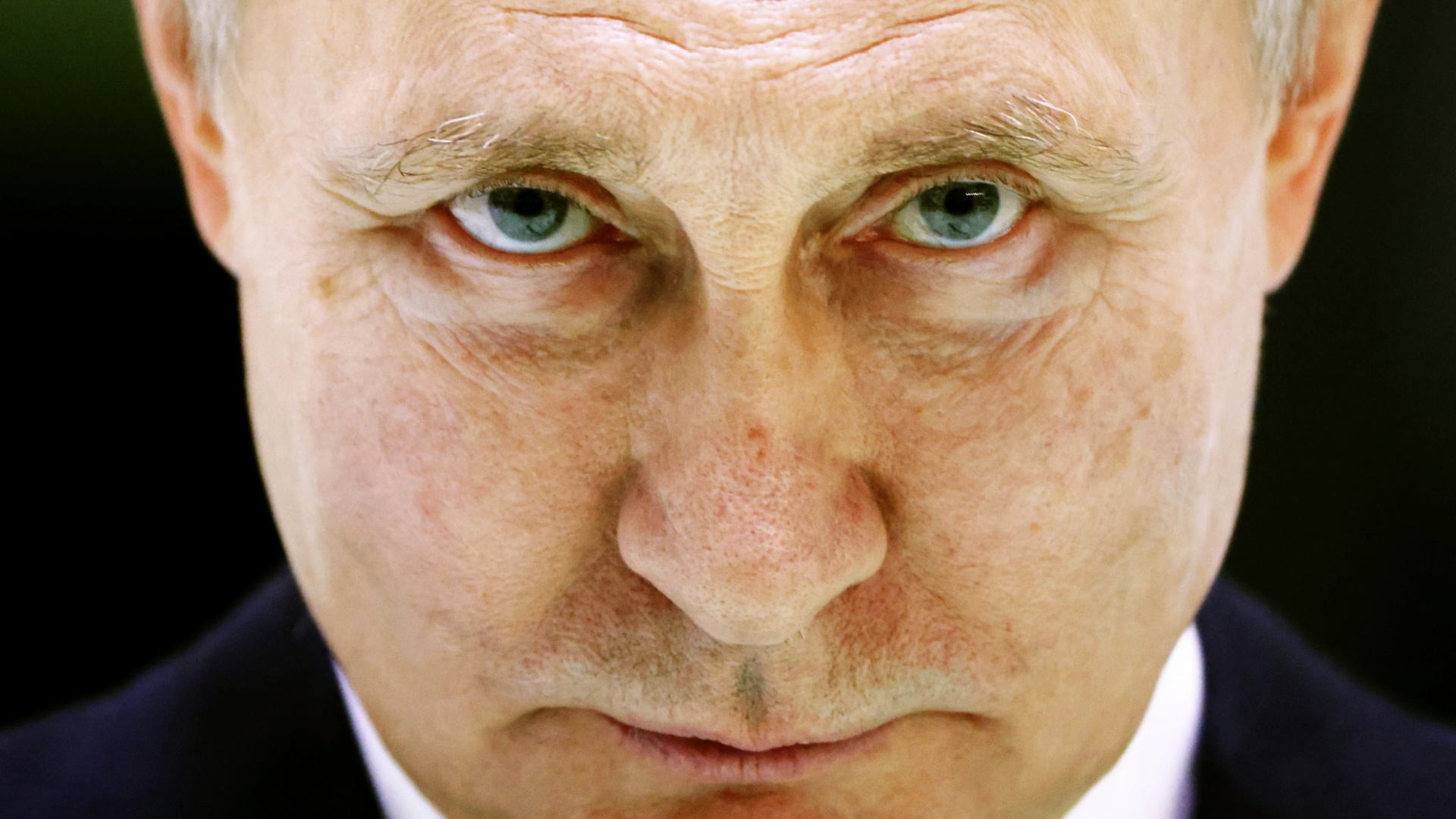Remembering the Moskva: How did Ukraine sink Moscow’s Black Sea flagship?
One of the major turning points of the early war in Ukraine was the sinking of Moscow’s Black Sea flagship Moskva. The move not only was a significant blow to Russia’s power in the area but a propaganda loss from which the Kremlin never recovered.
The most interesting part about the sinking of Russia’s Black Sea flagship was that Kyiv was able to accomplish it without a navy. At the start of the war, Ukrainian naval officials destroyed most of their own ships to keep them from falling into Russian hands.
“This is a difficult decision for any commander,” the Head of the Ukrainian Navy told The Economist in a recent article about the sinking of the Moskva and how Ukraine was able to strike at Russia’s Black Sea Fleet without any of its own ships.
Photo Credit: Wiki Commons
After the invasion, Ukraine’s navy was reduced to roughly three dozen ships and most of these were patrol and supply boats, weapons that could do little against the Kremlin’s formidable Black Sea Fleet, especially with the Moskva as the tip of the spear.
Photo Credit: Wiki Commons
The Moskva might have been nearly forty years old when it was sunk by Ukraine but the vessel was still a powerful weapons platform that had undergone a series of refits which made it one of the most heavily defended ships in the region.
Photo Credit: Wiki Commons
This Slava-class warship was the third largest type in the Russian navy and it came with what BBC News called a “triple-layered defense system,” one the news organization said made the Moskva’s difficult to hit.
Photo Credit: Wiki Commons
BBC News specifically noted the Moskva was equipped with medium and short-range defenses as well as a six close-in weapons system (CIWS) that could prove especially good at creating a defensive wall around the cruiser according to one expert.
Photo Credit: Wiki Commons
"The CIWS system can fire 5,000 rounds in a minute, essentially creating a wall of flak around the cruiser, its last line of defense," Jonathan Bentham of the International Institute for Strategic Studies explained to BBC News in April 2022.
Photo Credit: Wiki Commons
However, lacking any type of surface vessel that could damage the Moskva, let alone sink it to the bottom of the sea, Ukraine turned to one of its own homegrown inventions to knock the ship out of the fight—Kyiv’s R-360 antiship missile codenamed Neptune.
Photo Credit: Wiki Commons
The Neptune made its debut in 2015 at the Arms and Security International Exhibition in Kyiv and is a 16-foot-long missile that weighs 1,920 pounds with a 330-pound warhead accoridng to Military Times, which means it was a very dangerous weapon.
Photo Credit: Wiki Commons
But this dangerous weapon should have never been able to break through the Moskva’s defenses, which begs the question: how was Kyiv able to sink the ship with the Neptune and what do we actually know about what happened?
Photo Credit: Wiki Commons
Military Times noted what happened depends on the reporting but most Western media sources have come to the same conclusions about how the Moskva was sunk, the ship was hit with two of Ukraine's Neptune missiles on April 14th, 2022, and later sank.
Photo Credit: Wiki Commons
It was later reported by NBC News that the United States provided Ukraine with specific intelligence that helped Kyiv target the Moskva; however, U.S. officials said they did not know the Moskva would be targeted before it happened after the story was released.
Photo Credit: Wiki Commons
"We were not involved in the Ukrainians’ decision to strike the ship or in the operation they carried out," Pentagon Press Secretary John Kirby said in a statement. "We had no prior knowledge of Ukraine’s intent to target the ship.”
“The Ukrainians have their own intelligence capabilities to track and target Russian naval vessels, as they did in this case," Kirby added.
Russian officals claimed the Moskva was taken down by internal fires rather than Ukrainian missiles according to CNN. But this explanation wasn't good for the Kremlin either and analysts from the Insitute for the Study of War wrote that either reason for the Moskva’s sinking revealed Russian deficiencies.
“Both explanations for the sinking of the Moskva indicate possible Russian deficiencies – either poor air defenses or incredibly lax safety procedures and damage control on the Black Sea Fleet’s flagship,” the Institute for the Study of War analysts wrote.
The exact details behind what happened to the Moskva are still shrouded in mystery and we may never find out what happened to the vessel, or the ultimate fate of the 510 crewmembers who were aboard when the ship sank to the bottom of the Black Sea.
More for you
Top Stories



